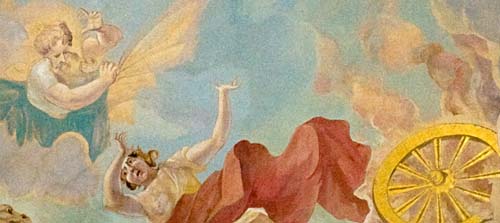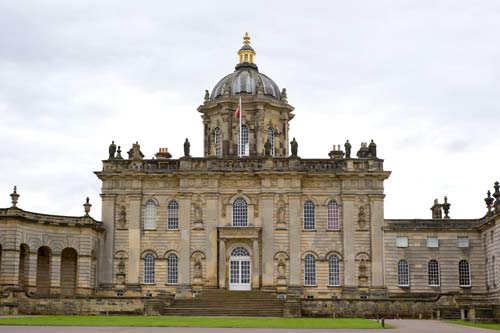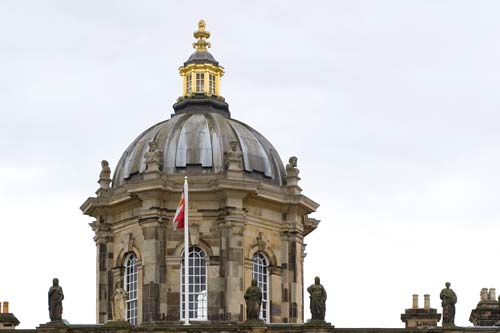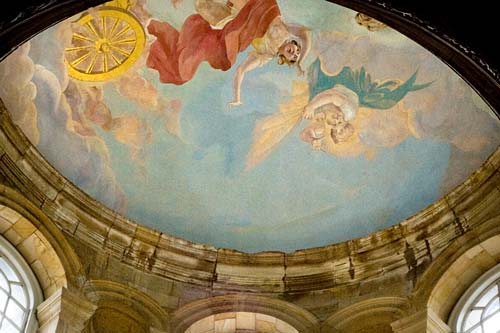
Visiting Country Houses
Visiting country houses is a very English pastime, and a very popular one.
Visits are made more interesting by the guides who stand in the various rooms in these country houses and wait – ready to talk to people. They are often very knowledgable.
I notice one theme that emerges time and time again when talking with them. It is the social and historical significance of the fact that these houses were once in private ownership and now belong to the nation.
The Death Of the Landed Gentry
Two world wars in the last century brought about the destruction of a large part of the landed gentry in England, with many country houses being sold to pay death duties.
That fact that one can visit these houses at all is because many of them are now owned by local councils or by national charities.
The National Trust – Guardian Of The Nation
Ask anyone in England to talk about country houses, and the name of the National Trust is certain to come into the conversation.
Three philanthropists set up the National Trust as a charity in 1895 ‘to act as a guardian for the nation in the acquisition and protection of threatened coastline, countryside and buildings.’
Today the Trust has over three million members and the entrance fees, subscriptions, and donations have helped to pay for the purchase and maintenance of more that 400 country houses, 600,000 acres (250,000 hectares) of countryside, and 700 miles (1,100km) of coastline, in and around the British Isles.
The Trust also has over 50,000 volunteers helping out and doing everything from acting as guides to selling souvenirs in the Trust shops.
Why is the Trust able to attract so many volunteers? Perhaps it is because they believe in helping to conserve Britain’s heritage, including its natural habitat.
Perhaps also because of a delight in taking over the stewardship of these properties from their former private owners.
Castle Howard
All of this makes Castle Howard stand out from the crowd because not only is it said to be one of the grandest country houses in Britain, it is still privately owned and by the same family who built it three hundred years ago.
It was built between 1699 and 1707 in the Baroque style and was the first commission of Sir John Vanbrugh who until that time had not built so much as a kitchen extension. He did not finish the entire building and part of one wing was built later by an architect who had different ideas about design and extended the wing and broke the symmetry of the original plan.

When we visited a couple of weeks ago we entered via that wing of the house and, after paying our entrance fee, went upstairs via a grand staircase and around and along and down again and along a further passage until eventually we came to the entrance hall.
Of course, guests would enter via the front door and come immediately into the entrance hall, or ‘great hall’ as it is called.

The great hall is a strange room, dominated by four huge, square, fluted pillars. Two sets of staircases rise, peaking from behind opposing pairs of pillars. There is no wall to the front because the hall opens into a corridor. Similarly at the rear of the hall.
It is like being in a ‘non room’, an Escher drawing, or an indoor gazebo.
The room is massive and as you look up you see it is crowned by a huge domed roof some seventy feet above floor level.
There is a painting in the ceiling of the dome, upside down as one enters the hall from outside and the right way up if one is the master of the house, welcoming guests. The original was painted by Antonio Pellegrini in 1712 and represents ‘The Fall of Phaeton’. That is the image at the top of this article.
The ‘Fall of Phaeton’ is the classical Greek myth of Phaeton who wanted proof that his father was Helios, the god of the sun. As proof, his father lets him ride the sun chariot but Phaeton cannot control it and it plunges to Earth. To prevent the destruction of the planet, Zeus sends a thunderbolt to kill Phaeton and save the Earth.
Quite a salutary story to have painted on one’s ceiling.
The Dome
When the house was originally built, the very idea of a dome on a building was a contentious issue in Protestant England.
Only Catholic cathedrals had domes – with the ‘small’ exception of St Paul’s Cathedral in London that had just been rebuilt following the destruction of the previous building in the Great Fire Of London.
The story goes that the Dean and Chapter (that is, the members of the governing body) of St. Paul’s were expecting a spire in the newly-commissioned cathedral. Instead, Christopher Wren built them a building with a dome and kept the building shrouded in sheets until its unveiling.
It sounds hardly credible that someone could build a building of the size of St. Paul’s and keep the dome ‘under wraps’ until the unveiling.
However, what the story illustrates is that domes had a Catholic connotation and so it was a brave move to put one on Castle Howard. Sir John Vanbrugh designed it for the then owner, the 3rd Earl of Carlisle, and is said to have persuaded him that it was a good idea.

Fire!
In November 1940 a fire started in a chimney at one end of the house. It found an outlet in the dome and while the flames shot upwards, the dome came crashing down to the floor below.
Rather than spreading to the rest of the house, the fact that the fire raced up through the hole left by the collapsed dome may have saved the house from further destruction.
Britain had already been at war for a year when the fire broke out, so it is understandable that no repairs were undertaken at the time.
Seventy years on, though, the fire-damaged rooms have still not been fully repaired because of the enormous cost of doing so.
There are so many rooms and the building is so big that it is easy to underestimate how much work would need to be done to return the rooms to their original state.
Some repairs were carried out with the money brought in when the house was used in the late 1970s and early 1980s as the setting for the BBC television series, Brideshead Revisited.
More work was done when the film of the same name was shot there.
The dome itself was repaired in 1960, under the direction of one of the foremost engineers of the time – Professor E. H. Thompson. He designed the new dome working from old black-and-white photographs of the house.
The new version of The Fall of Phaeton was painted by Scott Medd who worked from a single black-and-white photograph. Because the painted ceiling is set into the curve of the domed roof, the artist painted a small version in a shallow bowl and then scaled up and transferred the design to the ceiling 70 feet above floor level.
Can you picture Medd working on scaffolding at that height? It makes me think of Michelangelo working on the Sistine Chapel in the Pope’s official residence in the Vatican City.

Why not have our articles delivered to you by email?
You might also like to browse our ecards.